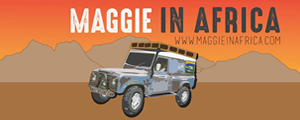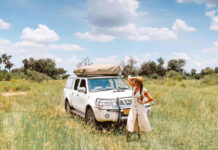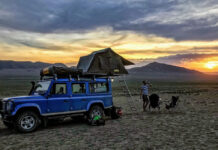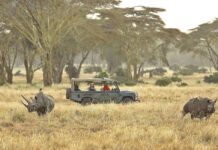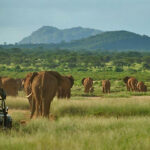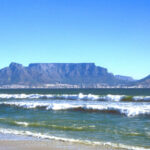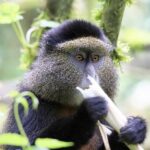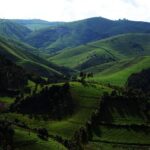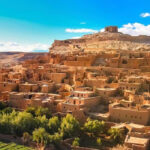After leaving Lesotho, Maggie and team headed for the Wild Coast of South Africa’s Eastern Cape. This region stretches along the N2 motorway, from the border of KwaZulu-Natal in the north, to East London in the south. This area is the homeland of the Xhosa people, and was where Nelson Mandela was born and raised.
We certainly agree that the name is fitting – the 250km of dramatic coastline is lined with with jagged cliffs, sheltered bays named after shipwrecks, and shark-filled waters with currents so strong that swimming is often a life-threatening pass time.
As the coast only accessible by rather long stretches of road that wind sharply over rolling hills and river canyons, we found the attractions and beaches to be relatively rustic and secluded. Perfect for an overland adventure 🙂
As usual, you can read about the overland route we took below, and follow on the map at the end of this post!
Port St Johns

Noel takes a walk on Second Beach, Port St Johns
For most travellers, including us, the Wild Coast starts or ends with the cosy coastal town of Port St John’s at the mouth of the Umzimvubu river. The town is known as the ‘Jewel of the Wild Coast’, although we can’t really imagine why because we found it to be rather run-down and industrial.
Nonetheless, the town has three main beaches, the unimaginatively called First, Second and Third Beach. Our favourite by far was Third Beach – lovely and secluded in the beautiful Silaka Nature Reserve. We had a great time walking up and down the beaches, especially the treks to the various viewpoints overlooking the coast.
Coffee Bay and the Hole in the Wall

Maggie checks out the view of Coffee Bay
The next stop on our journey was Coffee Bay. The small coastal town is just 80km south of Port St Johns, but took a good 2-3 hours to reach on gravel side roads. But the views were certainly worth the effort! We stayed for two nights at the lovely Coffee Bay Campsite, one of the best campsites we visited in South Africa.
In addition to beautiful beaches and a town full of quirky restaurants and backpackers, the main draw of Coffee Bay for most is the iconic Hole in the Wall – a sandstone formation in the ocean with a large opening through its centre.
- Wild flowers on Coffee Bay beach
- Beautiful Coffee Bay
- Hole in the Wall
- Sunbathing cattle in Coffee Bay
Nelson Mandela Museum in Qunu

Nelson Mandela mosaic at the Nelson Mandela Museum, Qunu
This part of the Eastern Cape is home to the birthplace of Nelson Mandela, South Africa’s first post-apartheid president and global human rights advocate. There are a number of museums dedicated to his legacy. On our way from Coffee Bay to Morgans Bay, we stopped by Nelson Mandela Museum exhibition at Qunu.
The museum is located a stone’s throw away from where Mandela attended primary school, and is built on a hill with stunning views of the surrounding area. Although the exhibit itself left something to be desired (just a series of placards detailing his life from childhood to presidency), anyone interested in South Africa’s history and human rights would enjoy the visit!
Morgans Bay

Maggie waiting for the pontoon ferry, Morgans Bay
We ended our trip through the Wild Coast much too soon, but at least our last night was spent in the lovely Morgans Bay. We stayed at the enchanting Yellowwood Forest campsite, which had by far the best designed ablutions we’ve ever experienced in a campsite.
The highlight of Morgans Bay had to be driving in on the pontoon ferry over the Kei River mouth – beautiful, although a little scar
